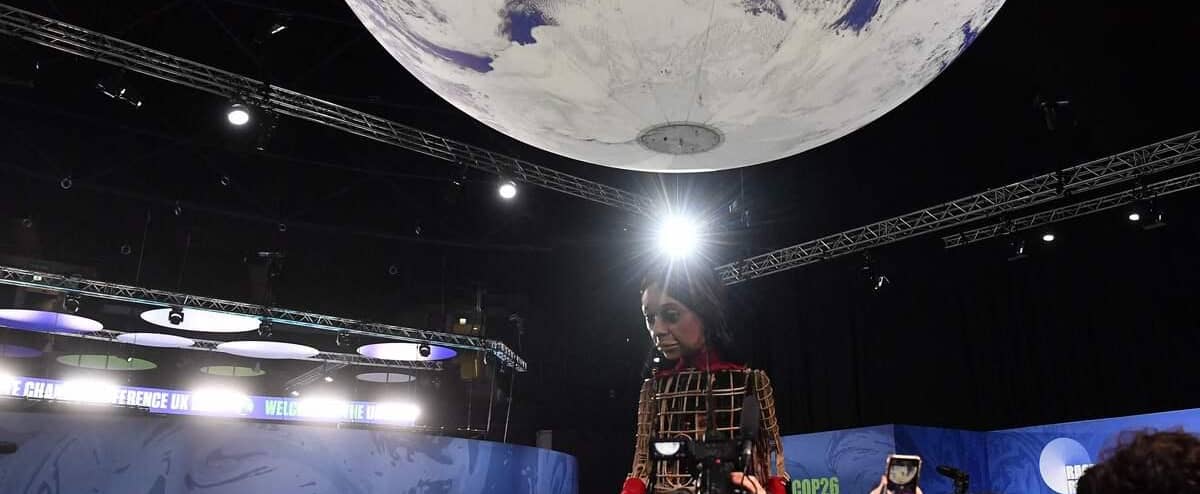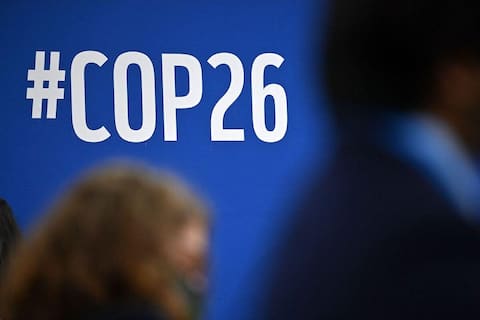Glasgow | Les tout nouveaux engagements climatiques des États n’ont que marginalement amelioré les chances de l’humanité de freiner le réchauffement de la planète, a regretté l’ONU mardi, appelant encore à plus d’ambition d’ici la finsur de la COP26 climate.
• Read also: A minister warns the world with his legs in the water
• Read also: Climate: the nightmare of ‘tipping points’
• Read also: At COP26, Obama calls for more, praises young people
Before and during the Glasgow Climate Conference that began on October 31, about thirty countries have put new commitments on the table, short or long term, notably Brazil and India, which have committed to carbon neutrality for the year 2070. Announcements that observers often consider important.
But United Nations Environment Program chief Inger Andersen said on Tuesday, “When you look at these new commitments, frankly, it was the mountain that gave birth to a mouse.”
The UNEP Annual Benchmark Report published just before the start of COP26’s 26th cycle predicted a “catastrophic” warming of +2.7°C compared to the pre-industrial era. or + 2.2 ° C taking into account the promise of mid-century carbon neutrality.
The forecast, updated Tuesday by the United Nations Environment Program, which assesses greenhouse gas emissions reduction targets for nearly 150 countries for 2030, doesn’t really change the situation.
The 2030 commitments for the past two weeks would represent 0.5 GtCO2e for lower emissions in 2030, but we would have to add 27 GtCO2e to limit warming to +1.5°C, which is the most ambitious target of the Paris Agreement.
As a result, the revised 2030 goals do not lead to any change in the temperature trajectory: + 2.7 ° C by the end of the century, according to the United Nations Environment Program.
If we consider about mid-century promises of carbon neutrality from more than 70 countries that account for three-quarters of global emissions, the trajectory shows a slight improvement: +2.1°C, versus +2.2°C.
Before the final hammer blow
But these promises of carbon neutrality are “generally vague, generally opaque, some talk about greenhouse gases and some only about carbon dioxide, difficult to assess, and many of them delay efforts to be made beyond 2030”, while it would be It is necessary to cut emissions by 45% by this date to hope for +1.5°C, Inger Andersen commented.
Other estimates of temperature forecasts have been released in recent days.
The most optimistic from the International Energy Agency raises hope of limiting global warming to +1.8°C if all short-term promises and carbon neutrality are respected. But it represents a commitment by a hundred countries to reduce emissions of methane, a potent greenhouse gas, by 30% by 2030, while the United Nations Environment Program does not take into account the kind of cross-sectional declarations that may “interfere” with national commitments.
Another climate action tracking analysis published on Tuesday forecasts a +2.4C increase based on short-term goals.
But most of the recent estimates are based on a 50% chance of staying below a certain cap, while the United Nations Environment Program takes a more cautious approach of 66%, as do UN climate experts (IPCC).
All of these assessments “show that there has been progress but clearly not enough,” commented on Tuesday COP26 President Alok Sharma, who wants to be able to say “credibly” at the end of this conference that the target of +1.5°C “is alive.” “.
In any case, none of the expectations will come true without policies in place on the ground. Inger Andersen said real action requires real leadership.
“We hope that heads of state, leaders, ministers and everyone else can reduce this leadership shortfall before the COP final blow.”
To see also…

“Extreme twitteraholic. Passionate travel nerd. Hardcore zombie trailblazer. Web fanatic. Evil bacon geek.”


